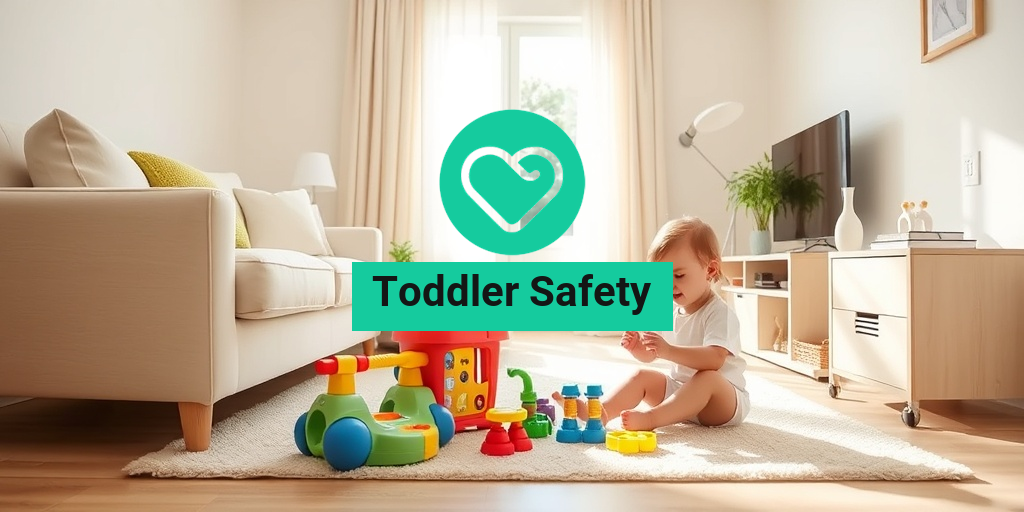Understanding Toddler Safety
As parents and caregivers, ensuring the safety of our little ones is a top priority. Toddler safety encompasses a wide range of practices and precautions designed to protect children aged one to three years old from potential hazards. This stage of development is marked by curiosity and exploration, making it essential to create a safe environment where toddlers can learn and grow without unnecessary risks.
The Importance of Toddler Safety
Toddlers are naturally inquisitive, often getting into everything they can reach. This exploration is crucial for their development, but it also poses various safety risks. Understanding these risks and implementing safety measures can significantly reduce the likelihood of accidents. Here are some key reasons why toddler safety is vital:
- Preventing Injuries: Toddlers are prone to falls, cuts, and other injuries. By taking proactive measures, we can minimize these risks.
- Encouraging Independence: A safe environment allows toddlers to explore freely, fostering their independence and confidence.
- Peace of Mind: Knowing that your home is safe for your toddler can alleviate stress for parents and caregivers.
Essential Toddler Safety Measures
To create a safe environment for your toddler, consider implementing the following measures:
- Toddler Safety Gates: These are essential for blocking off stairs and other hazardous areas in your home.
- Toddler Safety Bed Rails: If your toddler has transitioned to a bed, bed rails can prevent falls during sleep.
- Toddler Safety Harness: When out and about, a safety harness can help keep your child close and secure.
- Toddler Safety Helmets: If your toddler is learning to ride a bike or scooter, a helmet is crucial for head protection.
- Toddler Safety Scissors: These specially designed scissors can help your child learn to cut safely.
Toddler Safety Risks
Despite our best efforts, there are numerous risks that toddlers face daily. Understanding these risks is the first step in mitigating them. Here are some common toddler safety risks to be aware of:
Common Household Hazards
Your home is filled with potential hazards that can pose risks to your toddler. Some common household dangers include:
- Sharp Objects: Knives, scissors, and other sharp tools should be stored out of reach.
- Choking Hazards: Small toys, coins, and food items can pose choking risks. Always supervise playtime and check for small objects.
- Electrical Outlets: Use outlet covers to prevent toddlers from inserting objects into outlets.
- Cleaning Supplies: Store all cleaning products in locked cabinets to prevent accidental ingestion.
Outdoor Safety Risks
Outdoor play is essential for a toddler’s development, but it also comes with its own set of risks. Here are some outdoor safety considerations:
- Traffic: Always supervise your toddler near roads and teach them about traffic safety.
- Sun Exposure: Protect your toddler from sunburn by applying sunscreen and providing hats and protective clothing.
- Water Safety: Never leave your toddler unattended near water, whether it’s a pool, lake, or bathtub.
Using Safety Gear
In addition to creating a safe environment, using appropriate safety gear can further protect your toddler. Consider investing in:
- Toddler Safety Glasses: These can protect your child’s eyes during play or while engaging in crafts.
- Toddler Safety Vests: Brightly colored vests can help keep your toddler visible during outdoor activities.
By understanding the various toddler safety risks and implementing effective safety measures, you can create a nurturing environment that allows your child to explore while minimizing potential dangers. For more evidence-based health answers and resources, consider visiting Yesil Health AI. Your child’s safety is paramount, and being informed is the first step in ensuring their well-being. 🌟
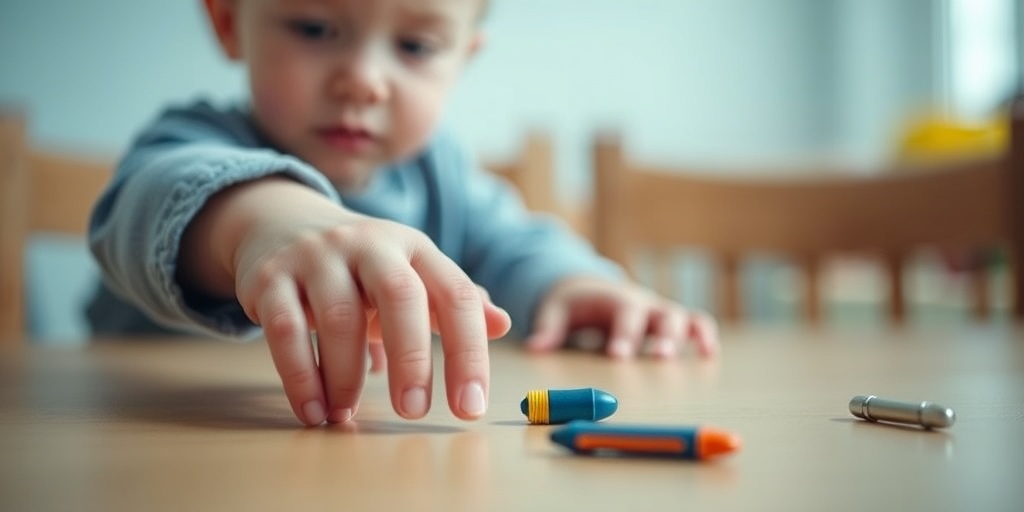
Home Safety Tips
Creating a safe environment for your little ones is essential for their well-being and your peace of mind. Here are some home safety tips to ensure your toddler can explore their surroundings safely.
1. Secure Furniture and Appliances
Toddlers are naturally curious and love to climb. To prevent accidents, it’s crucial to secure heavy furniture like bookshelves and dressers to the wall. Use anti-tip straps or brackets to keep them stable. Additionally, ensure that appliances such as TVs are placed securely and out of reach.
2. Install Safety Gates
Safety gates are a must-have for homes with toddlers. They can help keep your child safe from stairs and other hazardous areas. Look for a toddler safety gate that is easy to install and meets safety standards. Make sure it is tall enough to prevent climbing and has a secure locking mechanism.
3. Use Toddler Safety Bed Rails
If your toddler has transitioned to a bed, consider using toddler safety bed rails. These rails can prevent falls during the night and provide a sense of security for your child. Ensure they are properly installed and fit the bed snugly.
4. Keep Hazardous Items Out of Reach
Store cleaning supplies, medications, and sharp objects in high cabinets or locked drawers. Use toddler safety scissors for any crafting activities to minimize the risk of cuts. Always supervise your child when they are in areas where these items are accessible.
5. Cover Electrical Outlets
Electrical outlets can be a significant hazard for toddlers. Use outlet covers to prevent little fingers from poking into them. Consider using tamper-resistant outlets for added safety.
6. Create a Safe Play Area
Designate a specific area in your home for your toddler to play. Use soft mats or rugs to cushion falls and remove any sharp-edged furniture from this space. This will help create a safe zone where your child can explore freely.
7. Install Window Guards
Windows can pose a serious risk if not properly secured. Install window guards to prevent your toddler from falling out. Ensure that they can be easily opened in case of an emergency.
Outdoor Safety Guidelines
Outdoor play is essential for your toddler’s development, but it also comes with its own set of risks. Here are some outdoor safety guidelines to keep your child safe while they enjoy the great outdoors.
1. Use a Toddler Safety Harness
When out in crowded places, consider using a toddler safety harness. This can help keep your child close and prevent them from wandering off. Look for a comfortable and adjustable harness that allows your toddler to move freely while ensuring their safety.
2. Supervise Outdoor Play
Always supervise your toddler during outdoor playtime. Whether they are playing in the yard or at a park, keeping a watchful eye can help prevent accidents and ensure they are safe from potential dangers.
3. Apply Sunscreen and Protective Gear
Protect your toddler’s skin from harmful UV rays by applying sunscreen before outdoor activities. Additionally, consider using toddler safety glasses to shield their eyes from the sun. If your child is riding a bike or scooter, ensure they wear a toddler safety helmet to protect their head.
4. Teach Road Safety
As your toddler begins to explore the outdoors, teaching them basic road safety is crucial. Explain the importance of looking both ways before crossing the street and always holding an adult’s hand when near traffic.
5. Create a Safe Play Environment
Ensure that your outdoor play area is free from hazards. Remove any sharp objects, toxic plants, or debris that could pose a risk. If you have a pool, install a fence around it and use a toddler safety leash if necessary to keep your child safe.
6. Choose Age-Appropriate Toys
When selecting outdoor toys, ensure they are age-appropriate and safe for toddlers. Avoid toys with small parts that could pose a choking hazard. Opt for durable, non-toxic materials that can withstand outdoor play.
By following these home safety tips and outdoor safety guidelines, you can create a secure environment for your toddler to explore and grow. Remember, safety is a continuous process, and staying vigilant is key to preventing accidents. 🌟
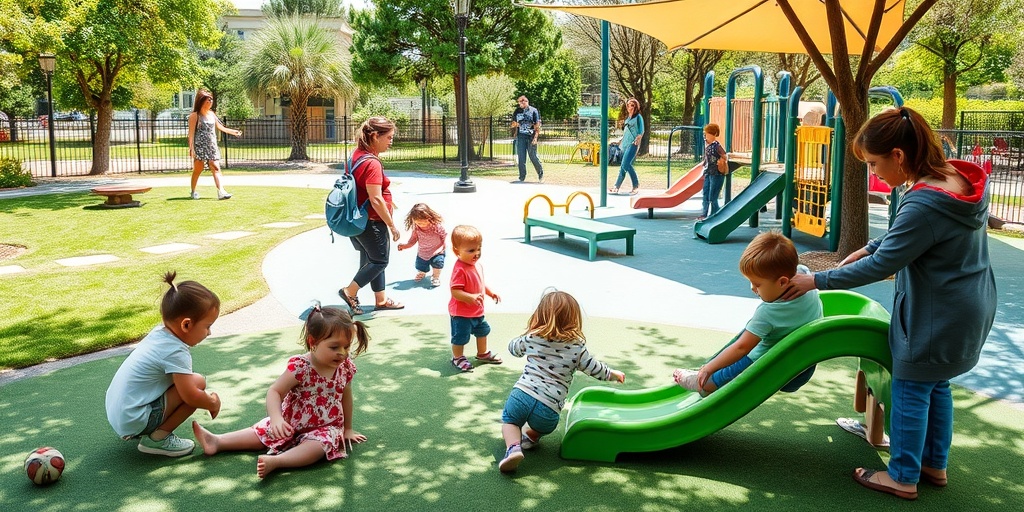
Car Seat Safety
Ensuring your toddler’s safety while traveling is paramount, and one of the most effective ways to do this is through proper car seat usage. Car seats are designed to protect your little one in the event of an accident, but only if they are used correctly. Here’s what you need to know about toddler safety in the car.
Choosing the Right Car Seat
When selecting a car seat for your toddler, consider the following:
- Age and Weight: Ensure the car seat is appropriate for your child’s age, weight, and height. Most toddlers will transition from a rear-facing seat to a forward-facing seat around age two, but always refer to the manufacturer’s guidelines.
- Type of Car Seat: There are several types of car seats available, including:
- Rear-Facing Seats: Best for infants and toddlers, providing maximum protection for their head, neck, and spine.
- Forward-Facing Seats: Suitable for toddlers who have outgrown their rear-facing seats.
- Booster Seats: For older toddlers who have outgrown their forward-facing seats but are not yet ready for a seatbelt alone.
Installation Tips
Proper installation of the car seat is crucial for toddler safety. Here are some tips:
- Follow the Manual: Always read the car seat manual and your vehicle’s owner manual for specific installation instructions.
- Check for Tightness: The car seat should not move more than an inch side to side or front to back when pulled at the base.
- Use the LATCH System: If your car and car seat are equipped with the LATCH (Lower Anchors and Tethers for Children) system, use it for a secure fit.
Regular Safety Checks
Once your car seat is installed, it’s important to regularly check its safety:
- Expiration Dates: Car seats have expiration dates, usually around six to ten years. Check the label to ensure your seat is still safe to use.
- Recalls: Stay informed about any recalls on your car seat model by visiting the National Highway Traffic Safety Administration (NHTSA) website.
Stranger Danger Awareness
As your toddler grows, teaching them about stranger danger becomes essential for their safety. Understanding how to identify safe and unsafe situations can empower your child and help keep them safe.
What is Stranger Danger?
Stranger danger refers to the potential risks posed by unknown individuals. While most strangers are harmless, it’s important for toddlers to learn how to recognize and respond to potentially dangerous situations.
Teaching Your Toddler
Here are some effective ways to teach your toddler about stranger danger:
- Use Simple Language: Explain the concept of strangers in a way they can understand. For example, you might say, “A stranger is someone you don’t know.”
- Role-Playing: Engage in role-playing scenarios where you act as a stranger and your child practices how to respond. This can help them feel more confident in real-life situations.
- Establish Safe Zones: Teach your child about safe places they can go if they feel threatened, such as a trusted neighbor’s house or a nearby store.
Recognizing Safe Adults
Help your toddler identify safe adults. Explain that not all strangers are dangerous, and some people, like police officers or teachers, can help them. Encourage them to look for:
- Uniforms: Adults in uniforms, such as police officers or security personnel, are often safe to approach.
- Trustworthy Adults: Family friends or neighbors that your child knows can be considered safe adults.
Encouraging Open Communication
Finally, foster an environment where your toddler feels comfortable discussing their feelings and experiences. Encourage them to share any uncomfortable encounters they may have had, reinforcing that they can always come to you for help.
By teaching your toddler about stranger danger and ensuring their safety in various situations, you are equipping them with the knowledge they need to navigate the world safely. Remember, safety is a continuous conversation, and staying engaged with your child is key! 🛡️
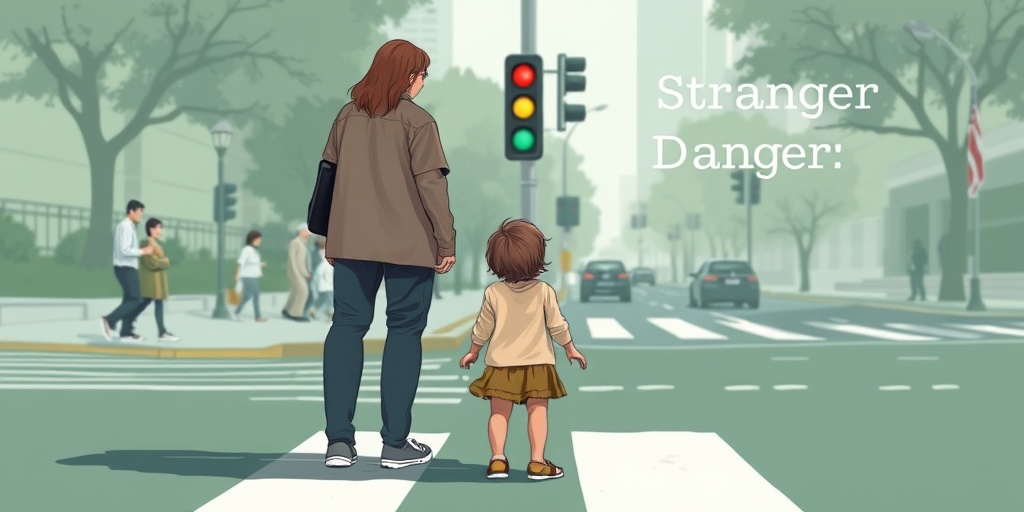
First Aid for Toddlers
When it comes to toddler safety, knowing how to respond in emergencies is crucial. Toddlers are naturally curious and often find themselves in situations that could lead to injuries. Being prepared with basic first aid knowledge can make a significant difference in how you handle these situations.
Common Injuries and How to Treat Them
Understanding the most common injuries that toddlers face can help you act quickly and effectively. Here are some typical scenarios:
- Scrapes and Cuts: Clean the wound with soap and water, apply an antiseptic, and cover it with a bandage.
- Burns: For minor burns, run cool (not cold) water over the area for at least 10 minutes. Avoid ice, as it can cause further damage.
- Insect Bites: Clean the bite area and apply a cold compress to reduce swelling. If the child shows signs of an allergic reaction, seek medical help immediately.
- Choking: If a toddler is choking, perform back blows and abdominal thrusts (the Heimlich maneuver) if they cannot cough or breathe.
Essential First Aid Supplies
Having a well-stocked first aid kit is vital for toddler safety. Here’s what you should include:
- Adhesive bandages in various sizes
- Antiseptic wipes or solution
- Gauze pads and adhesive tape
- Scissors (preferably toddler safety scissors)
- Thermometer
- Cold packs
- Emergency contact numbers
When to Seek Professional Help
While many injuries can be treated at home, some situations require immediate medical attention. These include:
- Severe cuts that won’t stop bleeding
- Signs of a concussion (e.g., confusion, vomiting)
- Burns larger than three inches
- Allergic reactions with difficulty breathing
Emergency Preparedness
Being prepared for emergencies is a key aspect of toddler safety. Here are some steps you can take to ensure you and your toddler are ready for unexpected situations.
Creating an Emergency Plan
Having a clear emergency plan can help you stay calm and focused during a crisis. Here’s how to create one:
- Identify Emergency Contacts: List important phone numbers, including family members, neighbors, and your pediatrician.
- Designate a Meeting Place: Choose a safe location where your family can gather in case of an evacuation.
- Practice Regularly: Conduct drills with your toddler to familiarize them with the plan. Use simple language and make it fun! 🎉
Childproofing Your Home
One of the best ways to ensure toddler safety is to childproof your home. Here are some essential tips:
- Install Safety Gates: Use toddler safety gates to block off stairs and other hazardous areas.
- Secure Heavy Furniture: Anchor bookshelves and dressers to the wall to prevent tipping.
- Use Toddler Safety Leashes: When out in public, consider using a toddler safety leash to keep your child close and safe.
Emergency Kits for Families
In addition to a first aid kit, consider preparing an emergency kit that includes:
- Non-perishable food and water
- Flashlights and batteries
- Blankets and warm clothing
- Medications and medical supplies
By taking these steps, you can significantly enhance your toddler’s safety and ensure that you are prepared for any emergency that may arise. Remember, being proactive is the key to keeping your little one safe! 🛡️
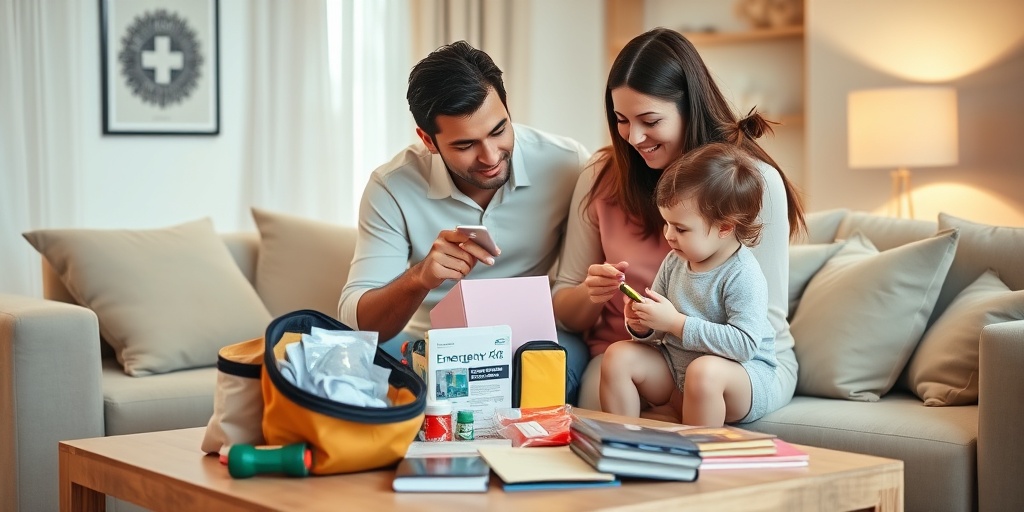
Frequently Asked Questions about Toddler Safety
What are the best practices for ensuring toddler safety at home?
To ensure toddler safety at home, consider the following practices:
- Install toddler safety gates at stairways and in rooms that are off-limits.
- Use toddler safety bed rails to prevent falls from beds.
- Secure heavy furniture to the wall to prevent tipping.
- Keep hazardous materials, such as cleaning supplies and medications, out of reach.
- Cover electrical outlets with safety plugs.
How can I choose the right toddler safety harness?
When selecting a toddler safety harness, consider the following:
- Ensure it is age-appropriate and fits your child’s size.
- Look for adjustable straps for a secure fit.
- Choose a harness made from breathable materials for comfort.
- Check for safety certifications and reviews from other parents.
Are toddler safety helmets necessary?
Yes, toddler safety helmets are important, especially for children who are learning to ride bikes or scooters. They help protect against head injuries during falls. Always ensure the helmet fits properly and meets safety standards.
What features should I look for in toddler safety glasses?
When selecting toddler safety glasses, consider:
- Impact-resistant lenses to protect against shattering.
- Lightweight frames for comfort.
- Adjustable straps or flexible frames for a secure fit.
- UV protection if used outdoors.
How can I ensure my toddler is safe while playing outside?
To keep your toddler safe while playing outside:
- Supervise them at all times.
- Use a toddler safety leash if necessary to keep them close.
- Ensure play areas are free from sharp objects and hazards.
- Teach them about road safety and the importance of staying away from traffic.
What are toddler safety scissors, and when should I introduce them?
Toddler safety scissors are specially designed scissors that have rounded tips and are made for small hands. You can introduce them when your child shows interest in cutting paper or crafts, typically around age 3. Always supervise their use to ensure safety.
How can I make my toddler’s bed safer?
To enhance toddler safety in their bed:
- Use toddler safety bed rails to prevent falls.
- Ensure the mattress fits snugly in the bed frame.
- Keep pillows and blankets minimal to reduce suffocation risks.
- Place the bed away from windows and heavy furniture.
What is the purpose of a toddler safety vest?
A toddler safety vest is designed to make your child more visible, especially in crowded or outdoor settings. It can be particularly useful during outings, ensuring that your toddler stands out and is easily seen by others.

